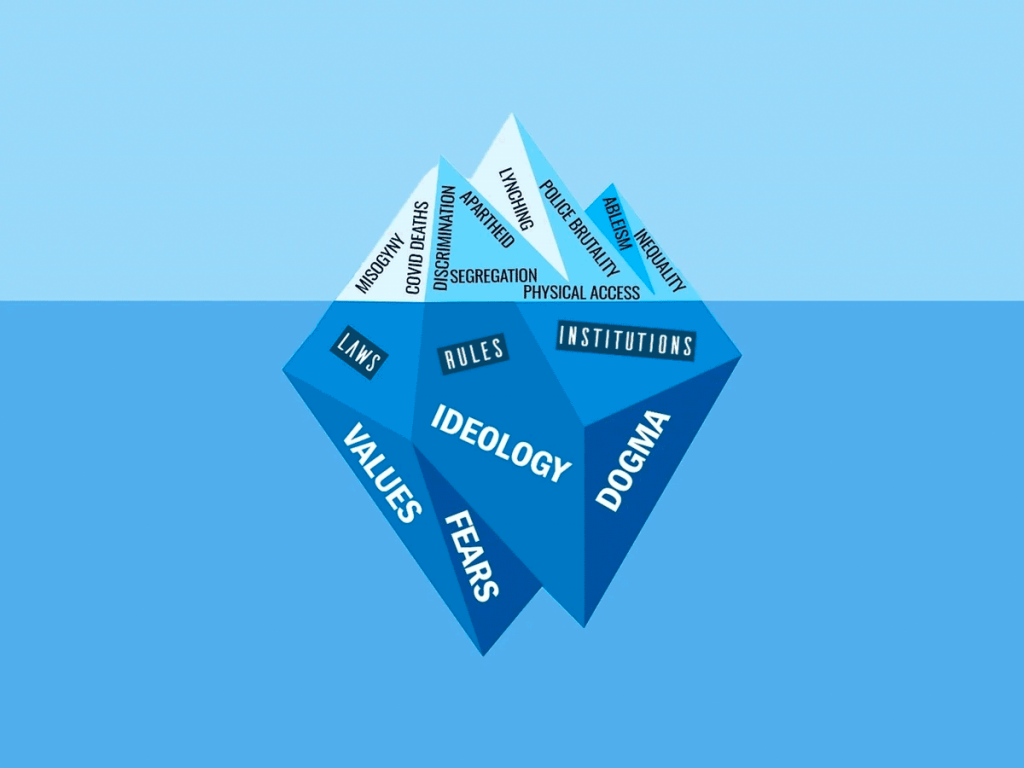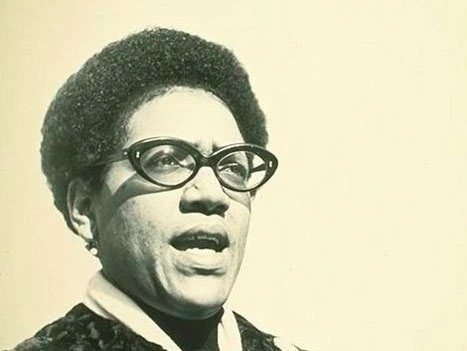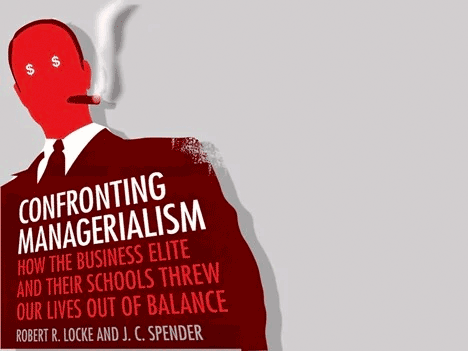EDI: A seat at the table, not crumbs from the floor
Racism and discrimination are structural; approaches to EDI must be too
Equality, Diversity and Inclusivity (EDI) are high on the public agenda, and universities are reacting in different ways to develop and incorporate processes to align themselves with these priorities. One of the challenges I have found in creating this process is the invisibility of causation for people who have not, and/or do not, experience Inequality, Exclusion and Disability, or what I will refer to as IED. The use of this acronym analogy is not an accident. IED’s, or Improvised Explosive Devices, are invisible, destructive forces that litter the landscape. In terms of Higher Education, they are the invisible structures (governance, rules, values) that lead to harms being committed in the workplace. They are the misogynistic prejudices of individuals and institutions that decry people on the basis of their sex and/or gender. They are the racist beliefs by people in decision-making positions that, with the support of institutional rules, result in exclusion of people of colour from positions they are qualified for. They are the institutionally-prevailing social beliefs that maintain that disabled people cannot do tasks they are competent to complete. They are the forces of indirect violence that rule to prevent people from achieving their potential in Higher Education workplaces.
These structures have not come into play by accident. They are the result of choices in policy, sometimes made out of prejudice, sometimes out of ignorance, sometimes out of sheer thoughtlessness. Apartheid in the US and South Africa are valuable, commonly-acknowledged examples and may appear to be dramatic. No-one is suggesting such forces are at work in UK HE. But racism, sexism and ableism share in common with these egregious processes, institutionally-enshrined beliefs and prejudices that validate and organize discrimination everywhere. There are few places, if any, where sexism, racism and ableism do not exist. There are many places where these conditions are outlawed. There are many more where they have been criminalized or otherwise rejected yet still inhabit mindsets, practices and institutions. This is very real, but hard to see, partly because we have come to believe such discrimination should not, and cannot, exist in a place with laws that outlaw such unconscionable behaviours. It is hard to see institutional structures, and even harder sometimes to see internalized biases. Yet these structural impediments and barriers are there, or we would not be having this conversation.

If we are tasked with removing barriers to EDI, we should not also be maintaining them. We must not be arsonist and firefighter at the same time. Those in power, by inaction, preserve the structures of power that lead to IED – Inequality, Exclusion and Discrimination. If those in power are the cause of discrimination, whether directly or indirectly, consciously or unconsciously, those structures of power must be challenged. Power begets inequality and discrimination. It is therefore a simple equation that the power structures that started it have to be adjusted.
This is not a scenario only found in HE. It is a practice of long-standing power in any historical institution not born from the the drive to end inequality, exclusion and discrimination, to resist change whilst presenting the illusion and rhetoric of leading it. Institutions seek to self-preserve: the lengths governments will go to, to preserve their status and hold on power is well-recognized. Power resists challenge, whether it admits it or not, and those with power cannot be trusted to understand and facilitate change demanded by those without it. The opposite of power is not just powerlessness; it is inequality. Audré Lorde famously declared that
The Master’s tools will never dismantle the Master’s house
That which built an oppressive system inscribed in power will not be undone using the approaches that created it in the first place. Patriarchy won’t reject patriarchs. Racism won’t be rejected by racists. Those who make and perpetuate the institutions of Higher Education must recognize that they perpetuate their own white, male, ableist dominance and that those structures, beliefs and values have to be reshaped in order that the institutions they lead reflect the wider character of society. Nobody was ever ‘trained’ out of the belief that they have the right to rule. Change will succeed best when leaders interrogate their own hidden, unconscious and conscious roles in perpetuating the problems they claim to want to fix. It’s just the way things are – after two centuries of making them that way.

Change and EDI
Change as a social force is a constant, and planetary digitization and ideological decoupling have precipitated that tendency dramatically. Change is everywhere, all the time. Mirroring Zygmunt Bauman’s premise of a constantly-shifting ‘liquid modernity’, a Cambodian man I knew in Phnom Penh (I did my PhD there) said the world was now in a state of ‘permanent transition’. He meant that no end point was ever arrived at anymore; no settled state in which conditions could be understood as a constant over time. Stasis was a thing of the past. The only constant is change, and that inevitably means conflict, because change doesn’t always suit everybody – especially when it challenges existing, entrenched power structures.
Resistance to change takes many forms, but whatever form it takes, it is normal. We may think in terms of revolutionary paradigm shifts like Einstein’s Theory of Relativity and the process of imperial decolonization. Or we may think in neoinstitutional terms of challenges to business attitudes like Corporate Social Responsibility (for example). In any challenge to long-extant institutional convention, when change threatens or challenges the old order or paradigm, invariably some elements support such change to varying degrees. They may have a deep comprehension of the need for change based on their own standpoints and stories, and understand the role of deeply-entrenched structures that have created an institution the way it is. Or they may be willing in principal but have a limited understanding, and ability to accept, what is required for change to be enacted in meaningful fashion. But there are also elements of institutional governance that seek to preserve the status quo using anything on the spectrum from passive non-participation to active disruption via micro-aggressions, misrepresentation and denial. Conservative preferences have a historical tendency to push back against modernizing influences; dominant power seeks to preserve its privilege and advantage, as one might expect of those with advantage and privilege. Recent examples include the UK government’s criminalization of the teaching of critical race theory in schools, or its refusal to understand the indirect violence that leads to direct violence of maintaining statues of white imperial slave traders, and denying the violence of Empire in the recorded, recent past. In the US, it might be the likes of the former US President Donald Trump sustaining police violence against black citizens. White institutional resistance to black challenge is an indisputable matter of public record.

EDI and change
Propensities for both reform and resistance to challenge and change are as true of universities as other large institutions. The rise of EDI in public consciousness and on social and political agendas is forcing long-overdue challenges to public and private institutions of all sizes and types. The awkwardly-named (it artificially disaggregates and masks intersectional complexity) Equality, Diversity, Inclusivity (EDI) agenda has been elevated in the wake of the wider social dynamics accompanying the killing of George Floyd and the impossible-to-ignore virulence and overtness of racism in the US and UK. Paralleling this institutional racism is the ‘revelation’, year after year, that women in the profession are routinely paid less than men, and people with disabilities are marginalized in Dickensian fashion. The old ways, old power, old institutions, old structures, face new challenges at paradigmatic level.
But supposing change processes were to be applied to inequality, exclusion and discriminatory institutions. How would such change be managed? That question is framed by a wider ethos permeating modern institutions. A favoured process of change management is managerial. Managerialism is a ‘deeply ideological project’ that projects the ‘organizational form of neoliberalism’ into Higher Education. Its purpose lies in ‘stripping public services of moral and ethical values and replacing them with the market language of costs, efficiencies, profits and competition’. In line with neoliberal projection, achievements are to be quantifiable, quantified and metricated as the means to measure success. Qualitative methods are not front and centre: the idea, for example, of evaluating the success of a given programme is rarely considered in terms of exercises like ‘Most Significant Change’ (MSC: how the programme in question has affected those in whose name it has been carried out, from their perspective). Managerialism in HE is characterized by ‘an emphasis on outputs over inputs; the close monitoring of employee performance and the encouragement of self-monitoring through the widespread use of performance indicators, rankings, league tables and performance management’. Change is being substituted with a tick-box mindset and practice that presents an appearance of constructive response whilst perpetuating the structures that gave rise to the problems in the first place. The mindset of change is predominantly managerial; the manifestation of this mindset is change through ‘training’.

Managerialism, training and box ticking
Managerialism in education is ‘essentially the expression of a tick-box culture’ that enables metrics to be compiled for the increasing preponderance and diversity of league tables that publicly rank and present core assets in a university’s advertising marketing and propaganda. This construction of a competitive environment drives the need for performance indicators that propel universities into public consciousness and private consumption. This bias has led to the rise of evaluations that CAN be quantified, like tick box exercises, which is why they are so prevalent in all walks of (neoliberal) life – and almost all life is neoliberal now. The achievement of institutional change in something like the Race Equality Charter (REC) submission, for example – an attempt to help institutions acknowledge, recognize and reform their inherent racism – is accomplished through employee reformation commonly achieved through the institutional monolith of training. Training both ensures managerialism instigates what it wants, and measures and metricates outcomes in ways that enable a competitive edge to be demonstrated in league tables. Just as ‘engagement’, REF and TEF are now part of HE marketing strategies, so too will be the level of REC accomplishment in the near future. Managerialism manages metricated change; tick box training is a key way this is undertaken.
Ticking quantitative boxes is a facile means for managerialist institutions generally, and Higher Education bodies specifically, to demonstrate fulfillment of objectives without any great depth to a given process. As long as something called ‘EDI’ can be accomplished by having its box ticked, racism, inequality and exclusion will not have their bells rung. Box-ticking exercises reduce qualitative constructs to quantitative outputs. The tendency of managerialism, then, is to direct change through training for conformity, where training involves ‘deliberately reinforcing preexisting dispositions towards unreflective obedience’. This is instantly recognizable in Foucault’s work on power. Governance developed the means to ‘discipline and punish’ (or correct) the abnormal deviating from governing rules. Training is shallow, momentary, brief, concluded, rather than immersive, long-term and perpetually reflective.
HE institutional training tends to be an exercise in demanding, extracting and accounting of conformity to an agenda set by managers. If management is all white, abled and elite, then the agenda is less likely to reflect matters of diversity. Further, if management – or any staff – undergo ‘training’, then it will be completion of an exercise in limited evolution, since training is to bring people in line with a stated priority. Training is what we do to learn a basic, simple task. The Army trains its soldiers to rapidly discharge, clean, reload and fire accurately under pressure, not to reflect on the reasons why they must kill. I was trained to fly a glider, not to understand why training in the services was being privatized. Friends were trained to repair cars, not to ponder fossil fuel dependency.
‘Training’ is not a meditative, critical, self-reflective exercise in its nature. It has a ‘before’ and ‘after’ state but the ends are what are measured and evaluated, not the means and quality and direction of the understanding and consciousness we are meant to evolve in order to develop meaningful, lasting, respected EDI. ‘Training’ in racism, ableism and inclusivity primarily involves an unreflective approach derived from managerial priorities and methodologies designed to produce conformity to the view of EDI from the unreconstructed top. The EDI agenda and associated training become, instead of an opportunity to rethink EDI and create a more transformative and structural praxis, an exercise in superficiality which, nonetheless, achieves the ‘ends’ of demonstrating a commitment to a given objective, thereby satisfying managerial needs in a metricated commercial context. This is why, in various UK universities, there has been such elite astonishment, confusion, resistance, arrogance, defensiveness, fear and anger, with a minor in interest, engagement and cooperation, from various locations of white HE leadership and power.

Training is not the answer to centuries of institutionalization and internalization. You can’t train out imperial, historical, social, contemporary violence against people of colour, especially in a tick box exercise conducted over a few months. All training will do is provide an illusion of engagement by facilitating a diluted response to very wicked problems. Scientific American put it like this:
‘Meaningful progress at the structural and institutional levels takes longer than a few days of implicit bias training’.
Indeed, given that most racist people deny, or do not understand, that they are racist, how can you train them to stop doing something they do not accept they are doing and being?
Rethinking EDI and leadership
If HE institutional training stems from choices made almost exclusively by white elites, training programmes in racism will inevitably refract that colour and power distortion. To a lesser degree they will also distort approaches to gender equality, until they deal with women of colour, where blindness to intersectionality will create create confusion and resistance.
White elites have rudely been shaken out of a not-so-post imperial slumber by a socially-accelerated demand to ‘get with the programme’. They are starting to realize that it’s very hard indeed, but are less able to see White Elite roles in producing a mirror-tocracy rather than a meritocracy. They cannot see they are part of the problem and need to change their own attitudes and approaches before structures start to shift in favour of race and EDI needs. That applies to anyone who hasn’t engaged extensively with the relationship between power and inequality, but change at this level across a university, involving conscientization rather than tick box training programmes, requires conscientized, transformed elite leadership and governance.
The message needs to begin with the leadership, and they have to be part of the change themselves. I was taught by the Royal Air Force Regiment to lead from the front. I learned that a good leader never expects subordinates to do something they wouldn’t do themselves. These are leadership cliches now, but they are still valid. University leadership at the very top, from whence the directives emanate, needs to begin the painful process of conscientization that Freire and Fanon both advanced as central – essential – for meaningful change to happen before they can lead others on that path. The conscientized, critical mind that understands power in social dynamics, relations, institutions and ideologies seeks solutions to problems just as the organizational technocrat will. But that mindset will also problematize solutions where power invisibly reinforces ‘preexisting dispositions towards unreflective obedience’ (above) and the structures that underpin them.
Conscientization
Deep, critical, reflective ‘conscientization’ is the only meaningful way for elites to engage with the Race Equality Charter’s objectives. This has to be followed by praxis and action/reflection. The same applies to the other dimensions of EDI. This is a lengthier, often permanent process, not a temporary or occasional training engagement. There is no endpoint that can be reduced to a number and a tick box. Conscientization requires mental preparation and reformation. It needs humility and openness. It requires for us to be brave and accept painful truths and to acknowledge the impact of those truths on people of colour. As much as anything else, it requires these elite scholars to apply, to the matter of race and power, the same critical faculties so prized in the conducting of the research that propelled them to the heights of the Ivory Towers they manage. ‘Training’ is not what will help you unpick centuries of hatred, domination and violence. To use a line from The Abyss,
‘you have to look with better eyes’.
So look at it as you do your own research. Frame it and theorize it. Familiarize yourself with its nuances, hunt down the widest literature to broaden your conceptualization and cognition. Interrogate its veracity and context. Test multiple hypotheses and apply a critical eye to methodologies and forms of interpretation of social scientific subjects. Reject absolutism and generalizations and solely quantitative methods for they say nothing about the human beings whose lives you control. Draw your conclusions. Then have them reviewed by your peers: hold a meaningful conversation with your greatest critics and greatest minds of your own subject. Prepare with humility to be wrong, again and again. Grow from the pain of being wrong without lashing out at those peers, knowing they are professionals there to guide you to a greater truth. That scholarly rigour, and intellectual debate, and concept reformation and critique, are far more than training can ever be. Allow yourself to consider for a moment, negative consequences of the power you hold, inherited from the institutions you occupy that arose in an era when racism was normalized and internalized that have changed insufficiently to readily accept challenge to such hegemony. Evolve your own understanding of power before you make power into inequality. Institutions are made of people who make rules based on beliefs which then reinforce the people who make rules. All that is being asked is that power holders examine their own roles in that process.

If you do not take such an approach, however, then the opposite will be true. If white institutional elites engage at the minimum possible level with the objective of ticking some boxes to acquire REC recognition, then that will set the tone for the rest of the institution. If instead, elites engage meaningfully, grow radically and transform the oppressive conditions in which BAME lives are normally situated, then that message will cascade down, drive change and inspire others. You will create alternative structures that do not intimidate, humiliate and violate those who are not like you. You will create a space safe for those who have been oppressed, and continue to be oppressed, by those older structures. In this way, as with your best research, you will herald and signal the ending of an old paradigm and the introduction and celebration of a new order.
The real-world benefits are manifold and quantifiable. It’s worth briefly reminding ourselves what they can be. A business report on the impact of better race relations, for example, concluded that understanding and challenging institutional and individual racism removed unwarranted barriers to people’s productivity, self-expression, alleviated recruitment shortages, ramped up staff quality by broadening the recruitment pool itself, upped morale, reduced turnover, improved management-employee relations, reduced disputes, improved relations between staff and clients (students, in our case), spread understanding of cultural differences, better engaged external institutions like research grant awarding bodies, and improved public relations and reduced costs incurred from fewer dispute tribunals. Similar gains are to be made by ensuring structural oppression is removed from gendered dynamics, and when those who are wrongfully and wrongly excluded by prejudice against dis-abilities are embraced.
A few last words
Employees are being emboldened by the higher public profile of, and greater social understanding of, discrimination and abuse in the workplace, whether it concerns inequality, exclusion or diversity. The tide is turning and the things employers used to be able to get away with are under a much more socio-digital, public lens, in a changing legal superstructure. The moral climate has changed too. But these are negative inducements for change. Yes, you should be factoring in the risks to reputation of an increased likelihood of being publicly punished for codes of conduct that originate in Empire and earlier. But there are so many other reasons to engage in a meaningful way with the structures, values and institutions you build, own and operate.
We cannot understand race and racism in a few conversations. You can’t change racism by sitting in a seminar a few times until that agenda is displaced by the next one. For all aspects of EDI, structural change is needed for structures to change. An existing architecture that does not reform itself and place EDI at the apex of the institution at the same level as principal decision makers so it can confront the structures that cause discrimination will not properly address power and the power dynamics that cause discrimination in the first instance. There should be PVC-level EDI leadership, probably joint and certainly in ways that reflect and capture inevitably inherent intersectional dynamics. If elites transform their own structures to include EDI at the highest level, with the same levels of autonomous scope for directing change as the other key policy makers, then the message is clear: this institution takes EDI seriously. We engage in radical restructuring. We lead by example.

This post was originally published at https://www.davidrobertsconsulting.org/blog/edi-a-seat-at-the-table-not-crumbs-from-the-floor
Equity, Diversity and Inclusion
Reflections, comments, discussion and opinion on EDI topics from Loughborough University staff and students